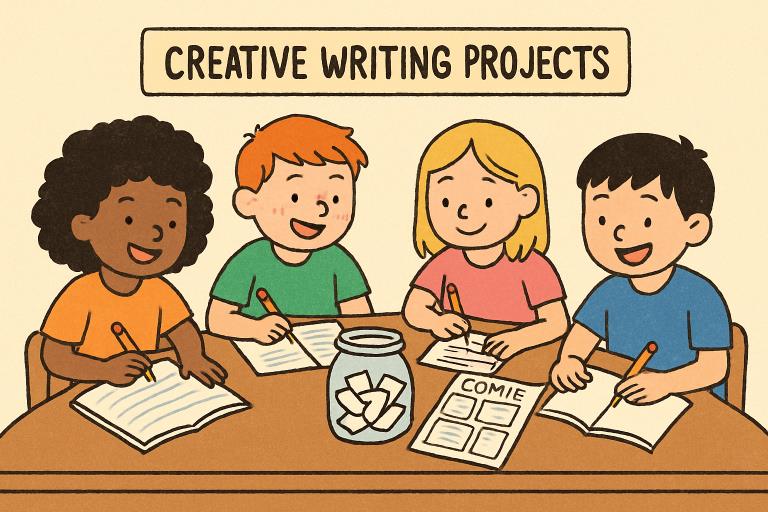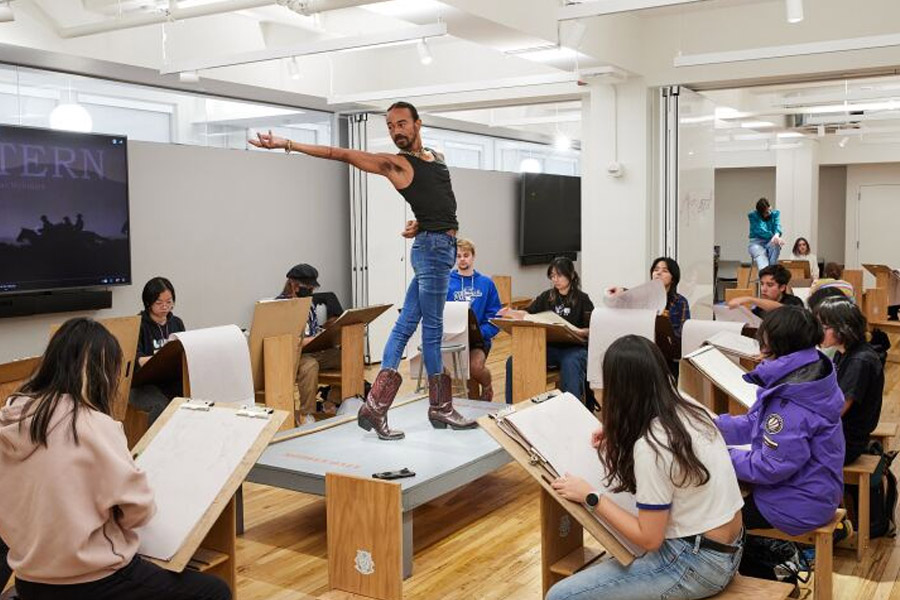Now Reading: Training and Adaptation with Accent Tools
-
01
Training and Adaptation with Accent Tools
Training and Adaptation with Accent Tools

Diving into the World of Accent Transformation
Remember those old-school language lessons, huddled in a stuffy classroom, mangling foreign phrases while the teacher loomed like a director critiquing a bad audition? The air thick with awkward pauses, cheeks flushing as corrections echoed off the walls. That was the norm for generations—clunky, public, and often disheartening. But zoom forward to now, where digital wizardry flips the script entirely. Enter accent tools, sleek gadgets in the language-learning arsenal, with the accent changer stealing the spotlight. It’s not some futuristic gadget from a spy thriller; it’s real, humming on apps and devices, guiding folks to nail that elusive American twang. This tech isn’t just tweaking sounds—it’s rewriting how we connect, adapt, and thrive in a borderless world. People chasing career leaps, wanderlust adventures, or simply sharper self-expression are finding their voices unlocked, one syllable at a time.
Picture a software engineer from Mumbai prepping for a Silicon Valley interview, or a Parisian actor eyeing Hollywood roles. These tools bridge the gap, turning potential stumbles into smooth strides. The shift feels cinematic, like shedding an old skin for a fresh role without losing the essence underneath. And the best part? It’s democratizing mastery, making what once required pricey tutors or immersion trips as easy as tapping a screen.
Why the Spotlight Shines on the American Accent
Let’s unpack this: why zero in on the American accent amid a symphony of global dialects? It’s not about crowning one superior—far from it. Think of American English as the lingua franca of our era, woven into boardrooms, blockbuster screens, and tech hubs worldwide. It’s the default in Netflix binges, TED Talks that go viral, and multinational deals sealed over Zoom. Mastering it isn’t erasure; it’s expansion. For non-native speakers, it smooths edges in negotiations, amps up charisma in pitches, and fosters that effortless rapport in diverse teams.
Imagine a entrepreneur from Lagos dazzling investors in Austin, her words flowing without the hitch of misunderstood inflections. Or a teacher from Seoul engaging U.S. students online, her clarity building instant trust. These aren’t hypotheticals—they’re everyday wins fueled by practicality. The American accent opens doors not because it’s “better,” but because it’s ubiquitous, like knowing the shortcuts in a sprawling city. Tools like accent changers make this pursuit playful, turning drills into discoveries. You experiment, tweak, and suddenly, you’re not just speaking—you’re captivating.
Research backs this vibe: clear pronunciation boosts perceived competence, easing everything from job hunts to social mingles. Yet, it’s laced with nuance. Accents carry heritage, a badge of where you’ve been. The goal? Layer on skills without stripping away stories. It’s additive, like collecting vinyl records from different eras—each one enriches the collection.
Harnessing AI’s Spark in Accent Mastery
Now, the real magic unfolds with AI at the helm, transforming rote repetition into interactive adventures. Gone are the days of dusty cassettes looping phrases endlessly. Today’s apps listen like attentive confidants, analyzing your voice in real time, pinpointing slips with gentle precision. The accent changer elevates this, morphing your recording into an American-inflected mirror—hear yourself as others might, adjustments illuminated like spotlights on stage.
It’s private, judgment-free zone. No raised eyebrows from peers, no clock-watching tutors. Slip in a session during your morning coffee or midnight unwind; the tool waits patiently. This flexibility suits the chaotic rhythms of modern life—commutes become classrooms, lunch breaks labs for experimentation. AI algorithms, honed on vast datasets of native speakers, dissect nuances: the rolled ’r’s, the flattened vowels, the rhythmic cadence that makes dialogue dance.
Envision a voice actor rehearsing lines, her app morphing accents on the fly, revealing subtleties she never noticed. Or a call center pro refining tones to soothe irate customers across oceans. These aren’t gimmicks; they’re grounded in tech that learns from you, adapting feedback loops tighter with each try. The insider scoop? Pair it with visualization—record, playback, refine—like editing a personal film reel until it shines.
Embracing Change While Staying True
Here’s a crucial twist: diving into accent adaptation doesn’t demand ditching your roots. It’s not an all-or-nothing overhaul; think of it as expanding your vocal wardrobe. Slip into the American mode for that high-stakes conference, then revert to your native lilt for family chats. Tools like accent changers empower this duality, letting you toggle without turmoil.
Picture an immigrant storyteller, weaving tales in her original dialect at home, then shifting seamlessly for podcast interviews. It’s empowering, not erasing. The playful side? Experiment wildly—exaggerate drawls, mimic movie stars, laugh at flubs. This keeps the process light, turning potential frustration into fun discoveries. Solid insights show that bilingual brains thrive on such switches, enhancing cognitive agility. You’re not losing yourself; you’re leveling up, adding layers to your linguistic persona.
Breaking Free from Traditional Learning Bounds
Classrooms once dictated the pace—uniform lessons plodding along, leaving some bored, others bewildered. Accents, those tricky beasts, varied wildly in difficulty; a rolled ‘th’ might click instantly for one, torment another for weeks. Accent tools shatter this mold, offering bespoke paths. AI pinpoints your hurdles—maybe it’s vowel shifts or syllable stress—and serves tailored drills, endless replays without rush.
It’s liberating, like wandering a vast library where every book opens to your page. Learners dive deep into personal pitfalls, emerging with natural fluency. Beyond basics, these platforms gamify progress: badges for milestones, streaks for consistency. The cinematic flair? Imagine scripting your own dialogue in a virtual world, accents evolving scene by scene. This personalization fosters deeper retention, turning passive absorption into active creation.
Shaping a Connected Global Dialogue
As accent tools proliferate, they’re reshaping how we converse across continents. Barriers crumble; what once sparked misunderstandings now sparks synergy. Teams scattered from Tokyo to Toronto collaborate fluidly, accents no longer muddling messages. Content creators amplify reach, their polished delivery drawing global crowds.
Think remote workers in virtual huddles, ideas flowing unchecked by phonetic friction. Or diplomats navigating talks, subtle intonations conveying intent precisely. This evolution promotes inclusivity, where voices aren’t sidelined by sound. In our hybrid era, these tools ensure everyone claims the stage, heard and valued. The ripple? Stronger bonds, innovative sparks, a world where communication bridges rather than divides.
Peering into the Future of Accent Innovation
Gaze ahead, and accent tools gleam with promise, evolving into multifaceted coaches. Tomorrow’s versions might weave in emotional intelligence, guiding not just sounds but sentiments—crisp confidence for keynotes, warm ease for chit-chat. Augmented reality could teleport you to simulated scenarios: bustling cafes, boardroom battles, practicing amid digital crowds.
The tech trajectory hints at integrations with wearables, whispering corrections via earbuds during real talks. Or community features, swapping tips in virtual accent clubs. It’s thrilling, like peeking behind the curtain of tomorrow’s language labs, where adaptation feels instinctive, immersive.
FAQ
What exactly is an accent changer?
An accent changer is an AI-driven tool that transforms your recorded speech into a different accent in real time, allowing you to hear and adjust your pronunciation instantly. It provides personalized feedback to help refine specific sounds without needing external help.
Why do many focus on learning the American accent?
The American accent is often prioritized because it’s a global standard in business, media, and technology, making it easier to connect with international audiences. It opens professional opportunities while allowing users to retain their original accents for personal use.
How does AI improve accent training over traditional methods?
AI offers instant, private feedback and personalized exercises, adapting to individual needs unlike rigid classroom settings. This makes practice flexible and less intimidating, accelerating progress through interactive, data-driven insights.
Can using accent tools make me lose my original accent?
No, these tools are designed to add new skills rather than replace your native voice, much like learning a new instrument alongside an old favorite. You can switch accents as needed, preserving your cultural identity.
What future developments might we see in accent tools?
Future tools could incorporate emotional cues for better intonation in various contexts and integrate virtual reality for immersive practice environments. This would make training even more practical and engaging for real-world applications.
Are accent tools suitable for all learners?
Yes, they’re accessible for beginners to advanced users, with customizable features that cater to different learning speeds and styles. They support self-paced progress, making them ideal for anyone seeking to enhance communication skills.





















